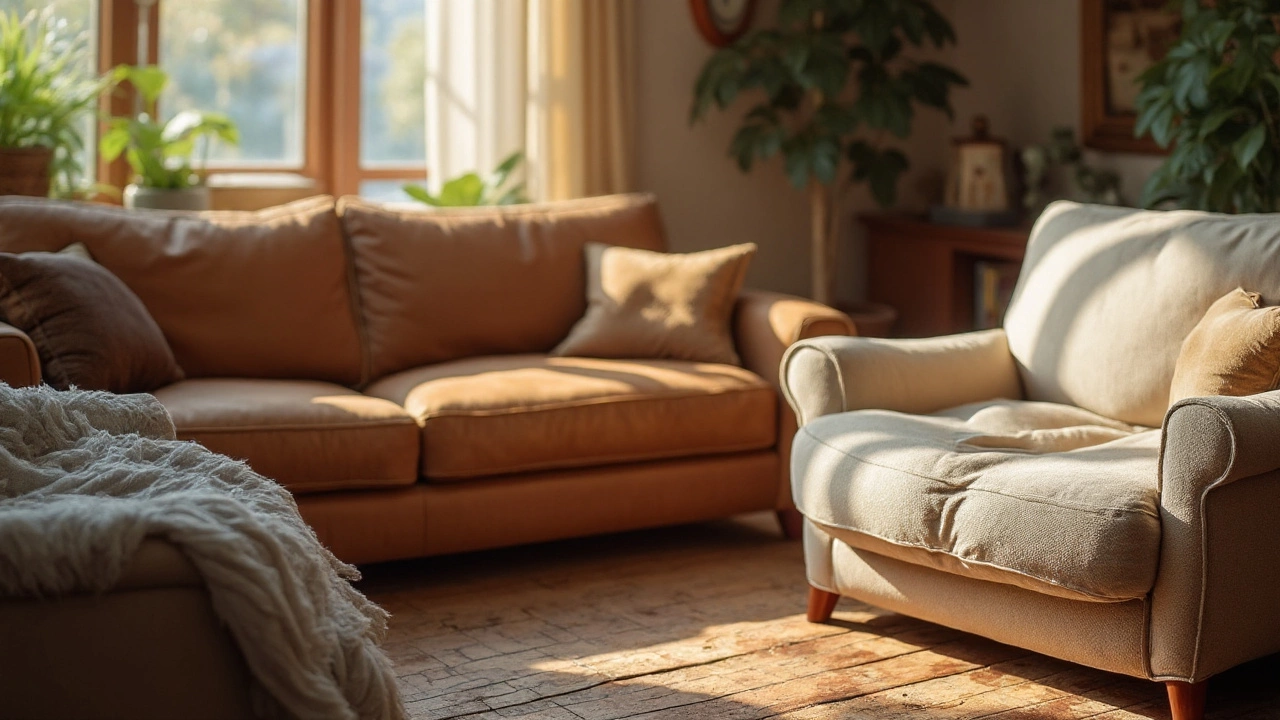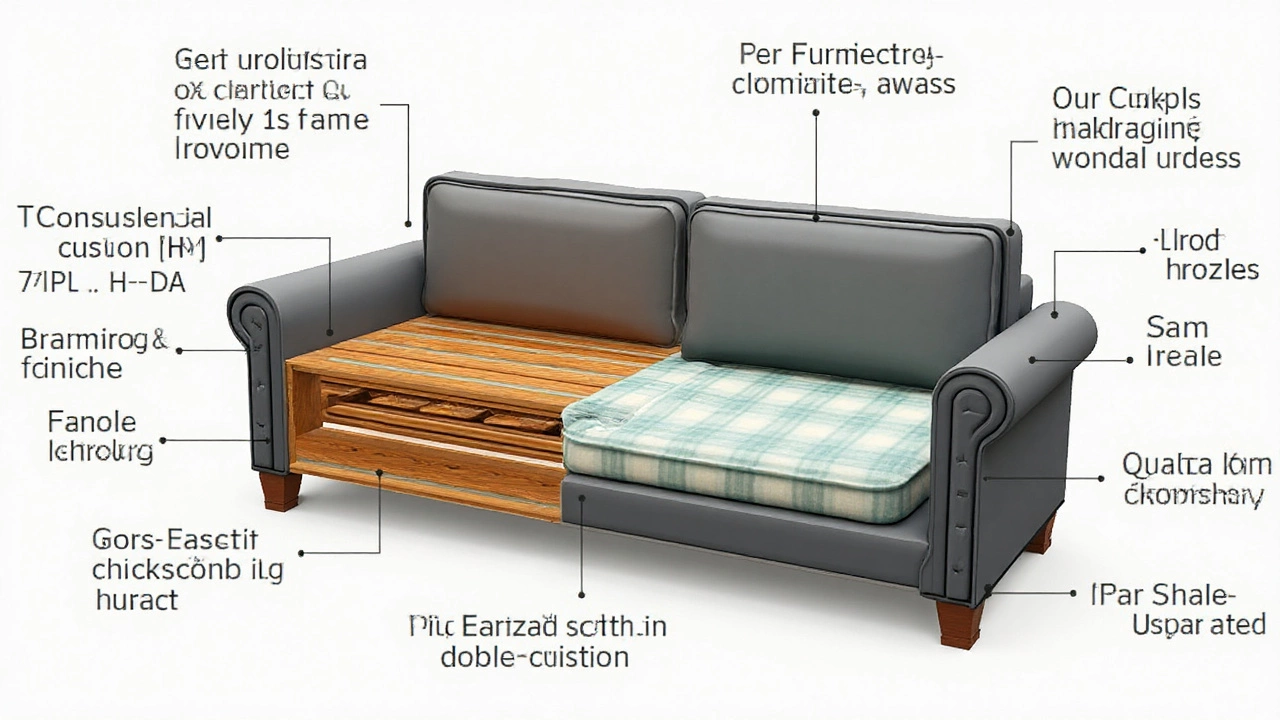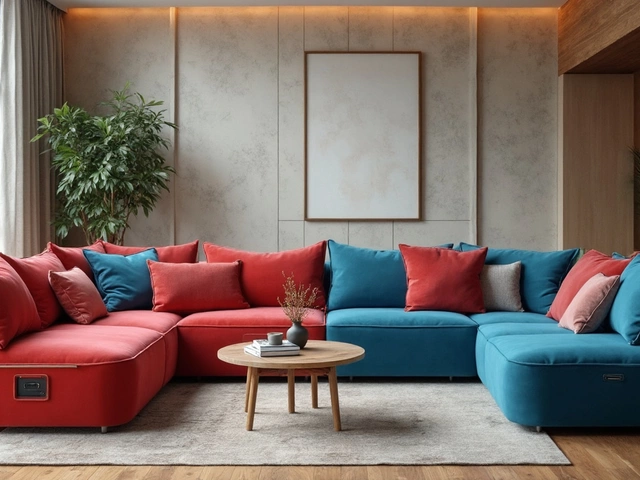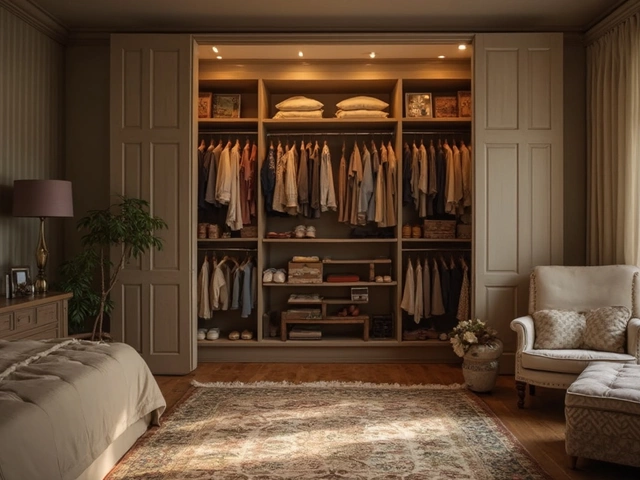
Imagine spending a chunk of your hard-earned cash on a new sofa, only for it to sag and peel well before the five-year mark. The number of couches in landfills each year backs this up—it's more than three million, just in the US. When it comes to picking a sofa that stands the test of kids, pets, clumsy flatmates, or unpredictable Wellington weather, there's a lot more to it than how soft the cushions feel in the showroom. Most folks get tripped up by what feels good today instead of what will survive years of Friday-night movies, muddy paws, and the odd pizza spill. Turns out, durability is less about price tag and more about what’s under the surface. You shouldn’t have to worry about an expensive regret—so let’s break down exactly what makes a sofa a survivor.
Sofa Frame: The Real Backbone of Durability
When people talk about strong sofas, the conversation usually skips straight to fabrics. But the truth is, the most durable sofa always starts with its frame. That’s the skeleton, and if that’s weak, forget everything else. The gold standard for tough couches is a frame made from kiln-dried hardwood, like oak, ash, or beech. Why kiln-dried? It pulls out moisture that can cause the wood to warp or crack over time. Softwoods, like pine, cost less but bend and squeak after a few years—especially if you live in a place with wild humidity swings like Wellington.
Plywood sometimes gets a bad rap, but it’s not all the same. At least 11–13 layers pressed and glued keeps things sturdy. Particle board or plastic? Pass, unless you want to give your dog an easier time chewing through your investment. And check the joinery—sofas that use dowels, wooden corner blocks, or metal screws hold up better than those just stapled and glued at the joints. You’d be surprised at how many so-called “premium” sofas skip these details to save costs. In one 2023 consumer review, sofas with kiln-dried, hardwood frames outlasted softwood counterparts by at least five years before developing major issues.
If longevity matters, try lifting one corner off the ground in the store. If the other side follows, the frame is solid; if not, walk away. It’s a quick test, but it works. Lastly, heavier isn’t always better—sometimes cheap frames are weighed down with low-quality chipboard. Feel for sturdy, balanced heft, not just dragging weight.
| Frame Material | Approx. Lifespan | Common Problems |
|---|---|---|
| Kiln-dried hardwood | 15-20 years | Rare creaking, minor dents |
| Plywood (11+ layers) | 10-15 years | May flex more |
| Softwood (e.g., pine) | 5-7 years | Bending, structural breaks |
| Particle board/plastic | 1-3 years | Sagging, splitting, quick wear |
Cushion Fillings: What’s Inside Matters (A Lot)
Don’t fall for the squishiest sofa in the shop—it’ll pancake before you know it. Cushion filling is the sneaky decider of your sofa’s comfort lifespan. High-resilience polyurethane foam is the go-to for most durable sofa cushions. It returns to shape after sitting, doesn’t quickly become lumpy, and gives that “just right” support for years. Cheaper foam? It’ll flatten or even crumble in shockingly little time, especially in sunny spots by the window—you know how blazing Kiwi summers can be.
If you want a fancy touch, some mixes sandwich foam with feather or fibre-wrap. They feel plush but hold their shape. Full-down or feather cushions feel luxurious, but there’s a catch: you’ll spend half your life fluffing them back into place, and feathers eventually poke through the linings, no matter what. For those with allergies or pets, it’s worth thinking twice about feather fill—fibre blends or all-synthetic fill last longer and need less daily maintenance.
The very best sofas combine spring units under the foam or use innerspring cushions, adding bounce and helping everything stay firm even after years of use. Regular flipping and rotating cushions helps distribute wear—that’s another sign to watch for: fixed (non-removable) cushions are a no-go if you want true longevity since you can’t rotate them to share the load.
Big tip: A quality sofa cushion recovers within a few seconds after you stand up. If it leaves a dent for minutes, that’s a red flag. Don’t be shy about popping off the cushion and peeking underneath—if the foam is pale yellow or looks brittle, it won’t last. Darker, denser foam usually signals higher quality.

The Battle of the Fabrics: From Leather to Linen
You can have the best frame and plump foam, but if the fabric isn’t up to the job, your sofa won’t look good for long. Microfiber fabrics top the charts for toughness—they resist stains, shrug off rough-and-tumble use, and clean up with a quick damp cloth. That’s why they’re the first pick for homes with kids or animals. Leather, especially top-grain or full-grain, is king for durability if you can handle the price. It outlasts any fabric, picking up a “lived-in” look rather than looking old, and even shrugs off the odd spill or scratch—patina is the whole point for some people.
Beware of “bonded leather” or “PU leather”—these are cheaper composites that crack and peel, especially under sun exposure. One 2022 New Zealand consumer test found that genuine leather couches had less than 5% visible wear after five years, compared with over 40% on bonded ones. If you’re eyeing fabric, look for higher Martindale rub counts—anything over 25,000 is heavy-duty (some performance polyesters hit 100,000). Natural fabrics like cotton or linen feel great but stain easily and fade faster, unless they’re blended with synthetics or specially treated.
Worried about muddy pawprints or red wine? Removable, machine-washable slipcovers are lifesavers. And don’t forget about colour—mid-tones and textured weaves show less wear than smooth, solid hues, especially in active households.
| Fabric | Durability | Maintenance | Best For |
|---|---|---|---|
| Full-grain/Top-grain Leather | Extremely High | Occasional conditioning | Pet/Child homes, long keeps |
| Microfiber | High | Easy clean, low stain risk | Busy families, pet owners |
| Performance Polyester | Very High | Spot clean | High traffic |
| Linen/Cotton | Medium | Professional cleaning | Formal rooms |
| Bonded Leather/PU | Low | Prone to peeling | Short-term use |
Details That Boost a Sofa’s Lifespan
The “toughest” sofa is more than strong frames and sturdy fabric. There are clever design tweaks that extend a couch’s life by years. Removable and reversible cushions double your usable wear and make cleaning easier. Skirtless designs with raised legs mean you’re less likely to kick the base and scuff it, and you can vacuum underneath so crumbs and dust don’t break down the frame from underneath. Zippered closures or Velcro fastenings make slipcovers a breeze for washing or replacing—don’t underestimate the life-saving power of being able to wash away accidents you know are coming.
Look for sofas assembled with durable webbing or coiled springs beneath the seat—these provide balanced support and are much less likely to sag than cheaper elastic straps. Even the quality of stitching and the way the fabric is attached tell a story. Double-stitched seams almost never split, even after years, while single rows of thread often fray or pop with heavy use. Patterns and prints do a better job hiding those little marks and threads life inflicts, while all-white or super-dark sofas show every stain and scratch.
Handles for flipping the cushions, anti-scratch surfaces, and moisture-resistant layers might seem small, but they add up. And be wary of “tool-free” assembly kits—these simplify setup, but often at the cost of wobbly connections that get worse over time. If your sofa is fighting you to assemble, it’s probably a sturdier build, weirdly enough.

Signs of a Truly Durable Sofa: Choosing for Your Home
So, with all this info, how do you actually pick the most durable sofa without second-guessing? There’s no shame in bringing a torch or your phone’s flashlight to check under cushions for frame quality, looking for fitted covers with hidden zippers, or even asking for a Martindale rating if you’re in a fancy store—anything above 25,000 means business. If you’ve got young kids or a rowdy dog, microfiber or top-grain leather is your safest bet, since both wipe clean and shrug off most mishaps.
Pay close attention to warranties. Makers who know their sofa is tough give five-, ten-, or even lifetime frame warranties. That’s usually a subtle clue about how confident they are in their build. Size matters, too—oversized sofas tend to sag if not supported well, so check for central support beams and robust suspension systems. And while style attracts the eye, a durable sofa is all about balance: thicker fabrics, solid joinery, and reliable brands who don’t cut hidden corners. Australian and New Zealand brands like King Living or David Shaw often use hardwood frames by default, tailored for our sometimes-damp Pacific climate, so keep an eye out for those.
A final tip: sometimes subtle features like anti-fade treatments, stain-guard coatings, or upholstery with a slight pattern means your sofa stays fresh and clean even after years of use. So, when you spot a sofa tagged "pet-friendly" or rated for high-traffic areas, that’s not just marketing—it’s a green light for long-term value. The right choice keeps you comfy—and your wallet happy—for way longer than you think.



